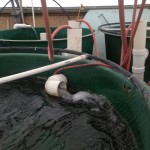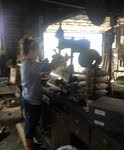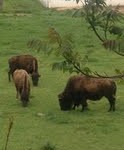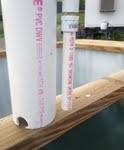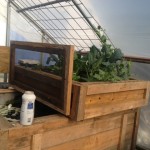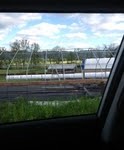My last week at Reymann Memorial Farm in Wardensville, WV made me realize that my stay here was much too short. With so many activities and areas of interest concerning pressing themes in the aquaponics industry, there was more to analyze than I gave myself time to do. I’m glad I am being so fully supported by the staff and faculty working on the project as a connection with them will provide important insights into addressing the barriers to widespread adoption in the aquaponics industry. To give you some insight, my research for the project and analysis of industry applications has gone through quite an evolution since I began this endeavor. At first I was trying to identify best management practices that are being established for aqupaonics but after discussions with my advisors I found myself trying to really understand what that would mean and look like. I realized, with the maturity of aquaponics and the way the industry interacts with the mechanisms of regulation, certifications and sustainability indicators as well as the realms of academic research, extension and producer application meant that my real interest lies in identifying opportunities and barriers within the industry. I was grateful for insight Dr. Semmens had on this subject and for our discussion about how best management practices related production and the development of farming techniques.
I spent most of this second week becoming familiar with daily maintenance and operational activities that went on in care and development of the aquaponics project at Reymann. This included several, thorough explanations concerning the purpose and function of much of the plumbing and aeration components in the aquaponics system. The exciting thing about aquaponics is that there are a multitude of system designs that can be utilized in the development of a productive operation which are really only limited by physics and creativity (indicating to me there is still much innovation to be sought within the practice). WVU’s aquaponics operation at Reymann Memorial Farm is unique because they have constructed a cold water, flow-through aquaponics system which is almost opposite from the recirculating systems that make up the majority being utilized in tandem with the lack of information about cold-water production (fish species, plant species, etc). I learned how to deal with pH fluctuations, supplementation, malfunctions and maintenance, all of which are likely to be encountered in the world of aquaponics.
I also spent quite a bit of time constructing a backyard-sized system that will serve as a demonstration for public. This, of course, led to my intermingling with drills, saws and heavy machinery! The system was three grow-bed, IBC tote build with external standpipe drain for the fish tank and linked bell-siphons draining the grow beds. IBCs (intermediate bulk containers) are liquid shipping containers that are recycled and commonly used in aquaponics builds so it was great to get this experience to see how simple it can be use readily available materials to construct a system. It was invaluable to get the hands-on experience of putting the components together myself, rather than to try to imagine schematics in my head or even see them on paper. I learned more than I thought I even imagined by having the great opportunity to work alongside Matt Ferrell and receive his seasoned instruction on constructing, starting and managing an aquaponics system.
If you’re like me, (excited by pvc, double drains, and air lift pumps) you’ll enjoy the pictures below.

